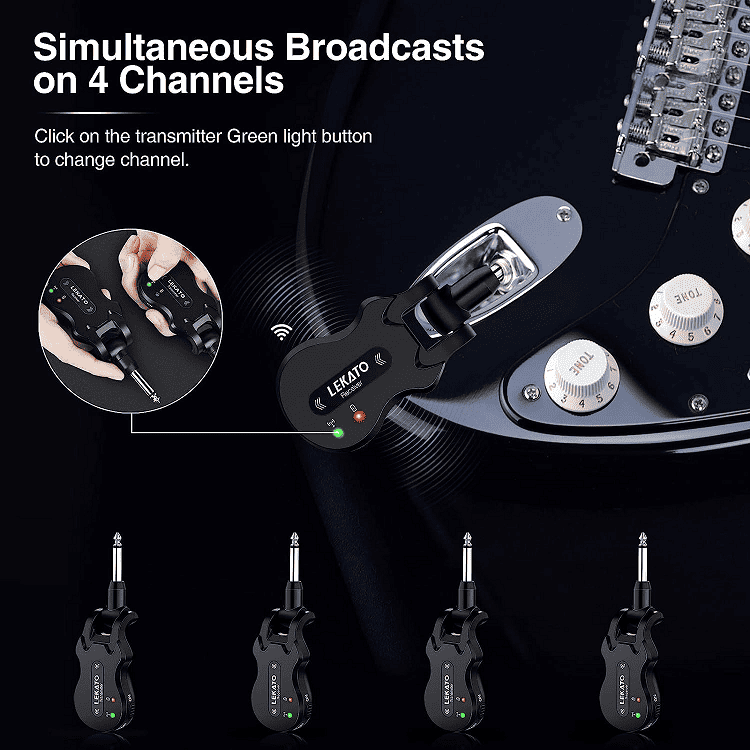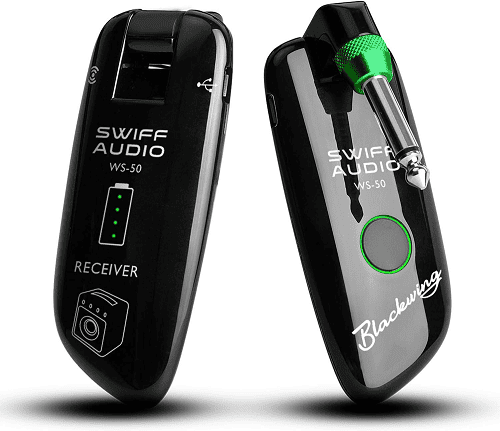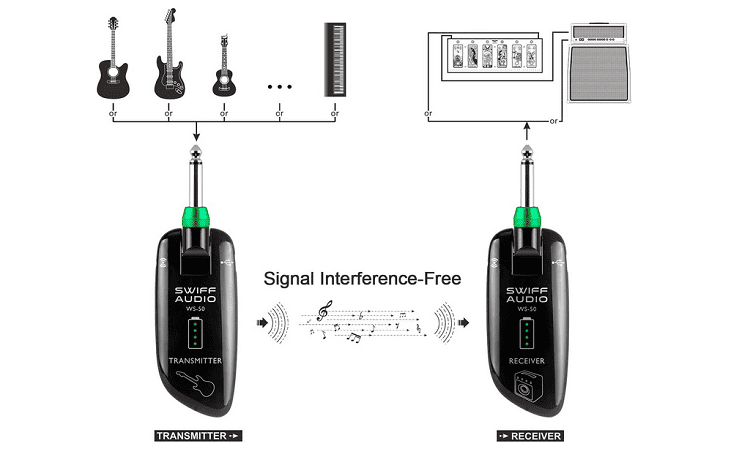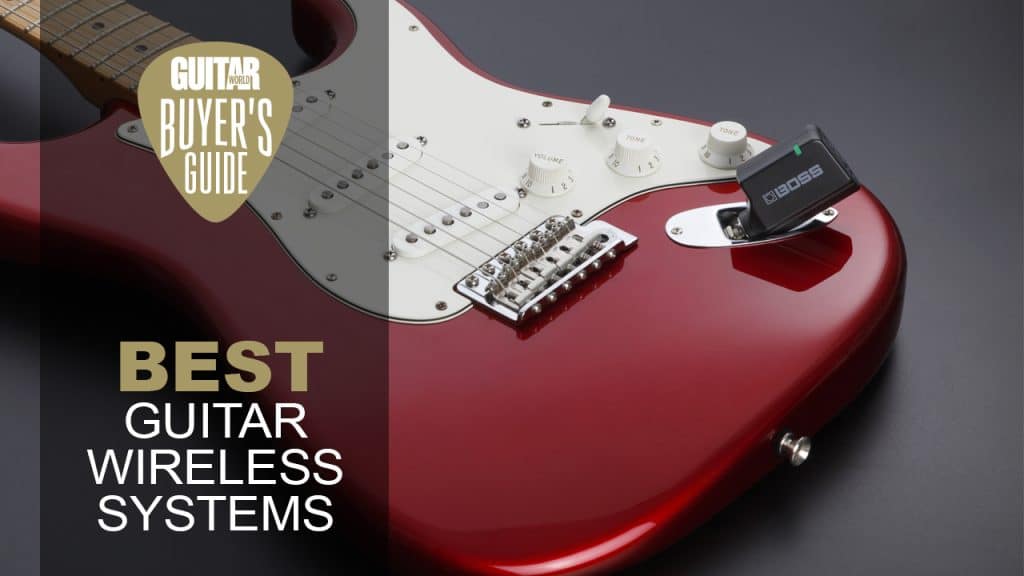So you’re a guitarist, ready to take your performances to the next level and untether yourself from the constraints of cables. But with so many options out there, how do you find the best guitar wireless system for your needs? Look no further, because this ultimate guide has got you covered. In this article, we’ll take you through everything you need to know – from the different types of wireless systems available, to considerations like range, sound quality, and battery life. Whether you’re a seasoned professional or just starting out, this guide will help you make an informed decision and find the perfect wireless system to enhance your guitar playing experience. Let’s dive in!
1. Understanding Guitar Wireless Systems
1.1 How do Guitar Wireless Systems Work?
Guitar wireless systems are devices that allow you to eliminate the need for cables and cords, giving you the freedom to move around the stage or studio without being restricted by wires. These systems consist of a transmitter and receiver, which work together to transmit the audio signal wirelessly. The transmitter is typically attached to your guitar, while the receiver is connected to your amplifier or audio interface.
When you play your guitar, the audio signal is picked up by the transmitter, which converts it into a radio frequency (RF) signal. This signal is then transmitted wirelessly to the receiver, where it is converted back into an audio signal and sent to your amplifier. This entire process happens in real-time, allowing you to enjoy a seamless and uninterrupted performance.
1.2 Benefits of Using Guitar Wireless Systems
Using a guitar wireless system offers several benefits for guitar players. Firstly, it provides you with the freedom to move around the stage without the worry of tripping over cables or getting tangled up in them. This allows you to fully engage with your audience and deliver an energetic and dynamic performance.
Secondly, a wireless system eliminates the need for long cables, which can often lead to signal loss and degradation. With a high-quality wireless system, you can maintain the integrity of your guitar’s tone and ensure that it sounds just as good when transmitted wirelessly as it does when connected with a cable.
Additionally, guitar wireless systems offer convenience and flexibility. They are easy to set up and operate, and many models come with user-friendly features like multiple channels and LCD displays. Furthermore, wireless systems can be used with both electric and acoustic guitars, making them suitable for a wide range of musical genres and performance styles.
2. Key Factors to Consider
When choosing a guitar wireless system, there are several key factors that you should consider to ensure that you make the right choice for your needs. These factors include range and operating frequency, transmitter and receiver features, and battery life and power options.
2.1 Range and Operating Frequency
The range of a wireless system refers to the maximum distance over which the transmitter and receiver can communicate effectively. It is important to consider the size of your performance space and how far you might need to move around while playing. A larger range will give you more freedom to explore the stage or studio without losing signal quality.
Operating frequency is another crucial factor to consider. In order to avoid interference with other wireless devices or radio frequencies, it is essential to choose a wireless system that operates on a frequency band that is not crowded or heavily used in your area. Many wireless systems offer multiple frequency options, allowing you to find the best one for your specific location and performance needs.
2.2 Transmitter and Receiver Features
The features of the transmitter and receiver are also important considerations. Look for a system that offers a durable and lightweight transmitter that can easily attach to your guitar without interfering with your playing. Some transmitters even have built-in guitar tuners or additional controls for adjusting tone or volume.
The receiver should have clear and easy-to-read displays, preferably with an LCD screen that shows important information such as battery life, signal strength, and selected channel. It should also have a reliable and secure connection to the amplifier or audio interface, ensuring a stable and high-quality audio signal transmission.
2.3 Battery Life and Power Options
Battery life is a critical factor to consider, especially if you frequently perform for long periods of time. Look for a wireless system that offers a decent battery life, preferably with rechargeable batteries or the option to use external power sources such as AC adapters or USB connections. This ensures that you won’t be caught off-guard by a dead battery in the middle of a performance.
It is also worth considering the power consumption of the wireless system. Some systems are designed to be energy-efficient, helping to prolong battery life and reduce the need for frequent battery changes or recharges. This can be particularly beneficial for touring musicians or those who perform regularly.
3. Types of Guitar Wireless Systems
There are three main types of guitar wireless systems available: analog wireless systems, digital wireless systems, and hybrid wireless systems. Each type has its own advantages and disadvantages, so it’s important to understand the differences between them before making a decision.
3.1 Analog Wireless Systems
Analog wireless systems have been around for many years and have a long-standing reputation for reliability. They operate by converting the audio signal into an analog RF signal before transmitting it wirelessly. Analog systems are known for their warm and natural tone, making them popular among guitar purists.
However, analog wireless systems are susceptible to interference and signal degradation, especially in crowded or high-interference environments. They also have a limited dynamic range compared to digital systems, which can affect the overall sound quality. Nevertheless, analog systems can still be a great choice for musicians who prioritize tone and simplicity.
3.2 Digital Wireless Systems
Digital wireless systems have gained popularity in recent years due to their advanced technology and improved signal quality. These systems convert the audio signal into a digital format before transmitting it wirelessly. Digital systems offer a wider frequency response and a higher dynamic range, resulting in a more accurate and detailed sound reproduction.
One of the main benefits of digital wireless systems is their resistance to interference. They utilize advanced frequency-hopping techniques and signal encryption to ensure a reliable and secure connection. However, digital systems can be more expensive than analog systems and may require additional setup and adjustment to optimize their performance.
3.3 Hybrid Wireless Systems
Hybrid wireless systems combine the best of both analog and digital technologies. They use a digital signal path for the audio signal transmission, which provides the benefits of improved signal quality and interference resistance. However, the signal is converted back to analog before reaching the amplifier, preserving the warmth and character of analog sound.
Hybrid systems offer a balanced approach, catering to musicians who appreciate the convenience and reliability of digital technology while still valuing the tonal qualities of analog systems. They are often considered a good compromise for those who want the best of both worlds.
4. Evaluating Signal Quality
When choosing a guitar wireless system, it is essential to consider the signal quality it offers. Signal quality can be affected by factors such as signal strength, interference, frequency response, and dynamic range.
4.1 Signal Strength and Interference
Signal strength refers to the stability and reliability of the wireless signal. A strong and stable signal is crucial for maintaining a high-quality audio transmission. Look for a system that offers a strong signal that can penetrate obstacles and provide a consistent connection even in challenging environments.
Interference can negatively affect the signal quality of a wireless system. It can be caused by other wireless devices, radio frequencies, or even physical obstructions between the transmitter and receiver. Select a wireless system that utilizes advanced interference rejection technology to minimize the impact of interference and ensure a clean and clear audio signal.
4.2 Frequency Response and Dynamic Range
Frequency response refers to the range of frequencies that the wireless system can accurately transmit. A broader frequency response allows for a more detailed and accurate representation of your guitar’s tone. Look for a system that covers a wide frequency range, ensuring that both the low and high frequencies are faithfully reproduced.
Dynamic range is the difference between the softest and loudest sounds that the wireless system can handle without distortion or signal degradation. A wide dynamic range allows for a more expressive and nuanced performance, capturing the full range of your playing dynamics. Consider a system with a high dynamic range to ensure that your music is conveyed in all its subtleties.
5. Understanding Latency
When using a guitar wireless system, it is important to understand the concept of latency and how it can affect your playing experience.
5.1 What is Latency?
Latency refers to the delay between when you play a note on your guitar and when you hear the sound through the amplifier or speakers. In a wired setup, the latency is typically negligible, as the audio signal travels almost instantaneously through the cable.
However, wireless systems introduce a slight delay due to the process of converting the audio signal to a digital or analog format, transmitting it wirelessly, and then converting it back to an audio signal. This delay can range from a few milliseconds to several milliseconds, depending on the wireless system. While it may not be noticeable to everyone, some musicians, especially those who are sensitive to timing and rhythm, may find it distracting or disruptive to their playing.
5.2 Minimizing Latency
When choosing a guitar wireless system, it is important to consider the latency it introduces and whether it is acceptable for your playing style. Look for a wireless system that offers low-latency performance, ideally below 10 milliseconds. This will help to ensure that the delay is minimized and does not significantly impact your playing experience.
Some wireless systems employ advanced technologies such as digital signal processing and low-latency algorithms to further reduce the latency. These systems can be particularly beneficial for live performances or situations where precise timing is crucial.
6. Compatibility with Guitar and Amp
Before purchasing a guitar wireless system, it is important to consider its compatibility with your specific guitar and amplifier setup.
6.1 Connecting to Electric Guitars
Most guitar wireless systems are designed to be compatible with electric guitars. They typically feature a transmitter that can be easily attached to the strap or body of the guitar, allowing for convenient and secure connection. Some systems also offer different types of connectors, such as 1/4″ jacks or locking plugs, to accommodate different types of electric guitars.
Make sure to check the compatibility of the system with your specific electric guitar, especially if you have unique or specialized connections or configurations. It is also worth considering any additional features or controls that the transmitter may offer, such as volume or tone adjustments, that can enhance your playing experience.
6.2 Compatibility with Acoustic Guitars
While acoustic guitars may not have the same level of integration with wireless systems as electric guitars, many wireless systems can still be used with acoustic guitars. The transmitter can be clipped to the strap or soundhole, allowing for wireless transmission of the acoustic guitar’s signal.
It is important to consider the size and weight of the transmitter, as acoustic guitars are generally more delicate and sensitive than electric guitars. Look for a wireless system that offers a lightweight and compact transmitter that won’t interfere with the natural resonance and tone of the acoustic guitar.
6.3 Integration with Amplifiers and Effects
Compatibility with your amplifier or effects pedals is another crucial aspect to consider. Most wireless systems utilize standard 1/4″ jacks or XLR connectors for connecting to amplifiers or audio interfaces. However, it is essential to ensure that the wireless system’s receiver has the necessary outputs or connections that match your specific setup.
If you use effects pedals, consider whether the wireless system is compatible with the specific pedals you use. Some wireless systems may introduce additional noise or sound degradation when connected to certain types of effects pedals or signal chains. Look for a system that offers a transparent and noise-free signal transmission, ensuring that your effects are not negatively affected.
7. User-Friendly Features
When choosing a guitar wireless system, user-friendly features can greatly enhance your overall experience and ease of use.
7.1 Easy Setup and Operation
Look for a system that offers a simple and intuitive setup process. Ideally, it should be a plug-and-play system that requires minimal configuration or adjustment. This will allow you to quickly get up and running without the need for complicated instructions or technical expertise.
Consider whether the system offers automatic scanning and syncing capabilities, which can greatly simplify the initial setup and frequency selection. Some systems even have memory presets that allow you to save and recall your preferred settings, making it easy to switch between different guitars or performance scenarios.
7.2 LCD Display and Controls
A clear and easy-to-read LCD display on the receiver can provide important information at a glance, such as battery life, signal strength, and selected channel. This can help you stay informed and make adjustments as needed during performances. Look for a system that offers a backlit display for easy visibility in various lighting conditions.
Having convenient controls on both the transmitter and receiver can also be beneficial. Some systems allow you to adjust settings such as volume, tone, or channel directly on the transmitter, eliminating the need to make frequent adjustments at the receiver. This can be particularly useful for live performances where quick changes may be required.
7.3 Multiple Channels and Connections
If you perform in venues or environments where multiple wireless systems may be in use simultaneously, it is important to consider a system that offers multiple channels. This ensures that you can find a clear and interference-free frequency to operate on, minimizing the risk of signal dropouts or degradation.
Additionally, check whether the system supports multiple connections or simultaneous use of multiple transmitters. This can be useful if you want to switch between different guitars or have multiple players using the same system during a performance.
8. Durability and Portability
Durability and portability are important factors to consider, especially if you are a touring musician or frequently travel with your gear.
8.1 Construction and Build Quality
Look for a wireless system that is built to withstand the rigors of touring and live performances. It should have a solid and rugged construction that can withstand accidental drops, bumps, and impacts. Consider the materials used in the construction, such as metal or high-quality plastics, that offer durability without compromising on weight.
Pay attention to features such as strain relief on cables and connectors, as well as the overall reliability of the system’s components. A well-built wireless system will give you peace of mind during performances, knowing that it can withstand the demands of the road and deliver consistent performance.
8.2 Portability and Transportability
Consider the size and weight of the wireless system, especially if you frequently travel or need to transport your gear. A compact and lightweight system will be easier to pack and carry, reducing the strain on your back and shoulders.
Some wireless systems offer additional features for portability, such as foldable antennas or detachable components. These features can help to further reduce the overall size and make the system more convenient to pack and transport.
9. Reviews and Recommendations
Before making a final decision, it is always helpful to research and read reviews from both experts and fellow musicians.
9.1 Expert Reviews and Ratings
Expert reviews and ratings can provide valuable insights into the performance, features, and overall quality of a guitar wireless system. Look for reputable publications or websites that specialize in reviewing musical equipment and read their assessment of different wireless systems. Pay attention to factors such as reliability, signal quality, and ease of use, as well as any specific pros or cons mentioned.
9.2 User Feedback and Testimonials
User feedback and testimonials can offer a real-world perspective on the performance and usability of a wireless system. Browse online forums, social media groups, or online marketplaces to find user reviews and comments from musicians who have actually used the system. Consider their experiences and take note of any recurring themes or issues mentioned.
While reviews and recommendations can provide valuable guidance, it is important to remember that everyone’s preferences and requirements may vary. It’s always a good idea to try out a wireless system for yourself, if possible, before making a final decision.
10. Price Range and Budget
Setting a budget is an important step in finding the best guitar wireless system for your needs.
10.1 Setting a Budget
Wireless systems can vary greatly in price, depending on the features, performance, and brand reputation. Determine how much you are willing to invest in a wireless system, taking into consideration factors such as your playing frequency, performance requirements, and long-term investment.
While it may be tempting to opt for the cheapest option available, it is worth considering the long-term value and reliability of the system. Investing in a higher-quality wireless system may save you money in the long run, as it is likely to offer better performance, durability, and overall satisfaction.
10.2 Value for Money
When evaluating the price of a wireless system, consider the value it offers in terms of its features, performance, and durability. Look for systems that strike a balance between affordability and quality, offering the best value for your money.
Read reviews and compare the features and specifications of different systems within your budget range. Look for a wireless system that meets your requirements and offers the best overall performance and longevity within your set budget.
In conclusion, finding the best guitar wireless system requires careful consideration of various factors such as how they work, their benefits, range and operating frequency, transmitter and receiver features, battery life and power options, types of systems, signal quality, latency, compatibility with your guitar and amp, user-friendly features, durability and portability, reviews and recommendations, and price range and budget. By taking into account these factors and conducting thorough research, you can confidently choose a guitar wireless system that suits your needs and enhances your musical experience.











